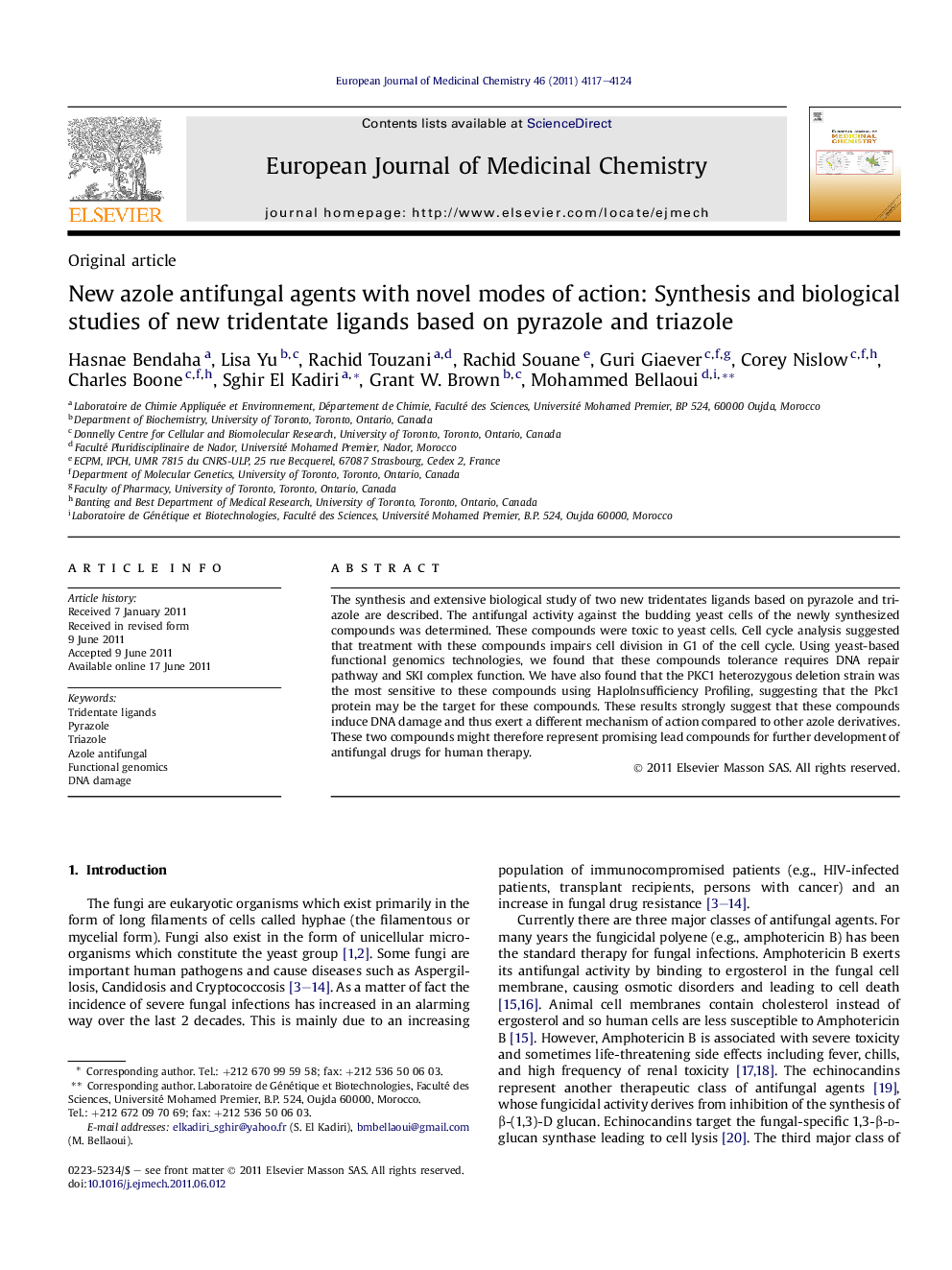| Article ID | Journal | Published Year | Pages | File Type |
|---|---|---|---|---|
| 1396173 | European Journal of Medicinal Chemistry | 2011 | 8 Pages |
The synthesis and extensive biological study of two new tridentates ligands based on pyrazole and triazole are described. The antifungal activity against the budding yeast cells of the newly synthesized compounds was determined. These compounds were toxic to yeast cells. Cell cycle analysis suggested that treatment with these compounds impairs cell division in G1 of the cell cycle. Using yeast-based functional genomics technologies, we found that these compounds tolerance requires DNA repair pathway and SKI complex function. We have also found that the PKC1 heterozygous deletion strain was the most sensitive to these compounds using HaploInsufficiency Profiling, suggesting that the Pkc1 protein may be the target for these compounds. These results strongly suggest that these compounds induce DNA damage and thus exert a different mechanism of action compared to other azole derivatives. These two compounds might therefore represent promising lead compounds for further development of antifungal drugs for human therapy.
Graphical abstractTwo new azole antifungal agents were synthesized and characterized. They induce DNA damage and thus exert a different mechanism of action compared to other azole derivatives.Figure optionsDownload full-size imageDownload as PowerPoint slideHighlights► We describe the synthesis and biological study of two new azole antifungal agents. ► We provide molecular insight into their mode of action using functional genomics. ► These compounds induce DNA damage. ► These azoles exert a different mode of action compared to other azole derivatives. ► Promising lead compounds for further development of antifungal drugs.
